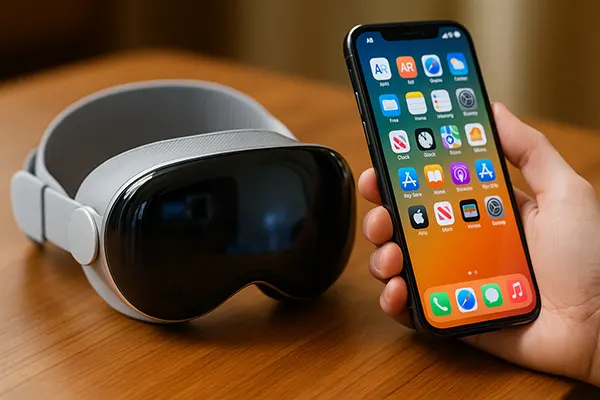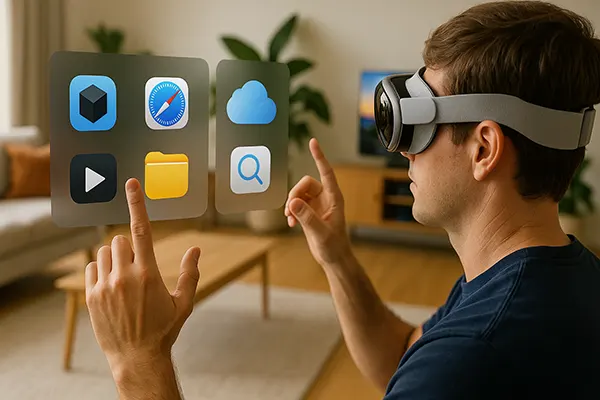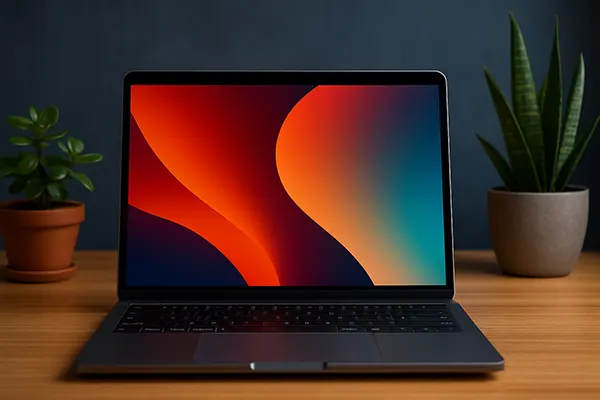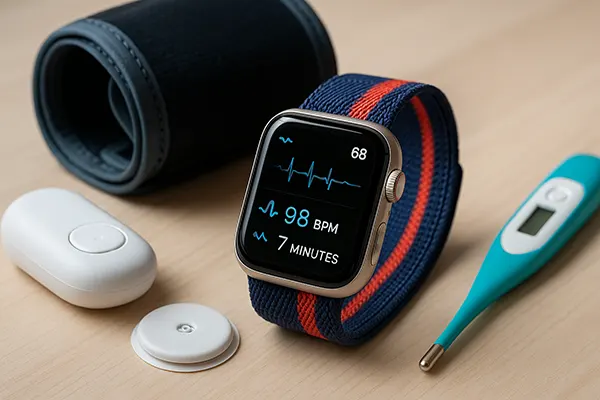
Vision Pro and iPhone Integration: How iOS 18 Prepares the Ground for Augmented Reality
In 2025, Apple’s strategy for augmented reality (AR) has taken a major leap forward with the deep integration between Vision Pro and the iPhone under iOS 18. This connection goes far beyond simple compatibility, offering a tightly interwoven ecosystem where hardware and software collaborate to deliver a smooth, immersive and practical AR experience. With Vision Pro now available in more countries and supported by developers across multiple industries, Apple has created a framework that ensures AR is no longer a futuristic concept but a daily utility.
Seamless Ecosystem: Vision Pro Meets iOS 18
One of the key strengths of Apple’s ecosystem in 2025 is the way Vision Pro pairs with iPhone models running iOS 18. By leveraging the advanced Neural Engine and A17 or newer chips, iOS 18 provides optimised ARKit support, enabling real-time spatial mapping and precise object tracking. This allows Vision Pro to offload certain processing tasks to the iPhone, improving battery life and performance while maintaining high-fidelity visuals.
iOS 18 introduces background AR processes that continue running even when users switch between apps. For example, navigation overlays in Apple Maps can stay active in Vision Pro while you use the iPhone for messaging or calls. The result is a truly continuous experience where devices work in harmony rather than as isolated tools.
Furthermore, the iOS 18 Control Centre includes direct controls for Vision Pro settings. Users can adjust display preferences, manage app permissions, and trigger quick-capture features for AR recordings directly from their iPhone without removing the headset. This streamlines workflow for both casual users and professionals working in fields like design, healthcare and architecture.
Cross-Device Features Enhancing AR
iOS 18 and Vision Pro now support cross-device handoff for AR sessions. This means you can start an AR meeting in Vision Pro and instantly transfer it to your iPhone if you need to step away from the headset. Apple has optimised FaceTime with shared AR objects, allowing participants to interact with 3D models in real time, regardless of whether they are using Vision Pro or an iPhone.
Spatial audio synchronisation has also been improved, ensuring that sound sources match their visual positions precisely across both devices. This upgrade is particularly valuable for gaming, training simulations, and collaborative work environments where accuracy is critical.
For developers, the new ARKit 8 toolkit in iOS 18 offers APIs that detect when Vision Pro is connected and adapt content accordingly. This eliminates the need for duplicate app versions and allows for unified experiences across hardware.
Practical Applications in Everyday Life
Apple has positioned the Vision Pro and iPhone combination not as a niche gadget setup, but as a solution for real-world tasks. In education, students can use Vision Pro for virtual lab experiments while their iPhone displays supplementary data or acts as a control device. In retail, shoppers can try on virtual clothing through Vision Pro while using their iPhone to finalise purchases or view product reviews.
In 2025, industries such as healthcare are taking advantage of this integration. Surgeons can view 3D anatomical models during operations via Vision Pro while receiving vital signs and alerts directly to their iPhone interface. This approach improves focus and reduces the need to switch between tools.
Even in entertainment, Vision Pro and iOS 18 make AR concerts, sports events, and interactive exhibitions more accessible. Ticketing, live commentary, and social media sharing can all be managed from the iPhone while the headset delivers a fully augmented viewing experience.
Accessibility and User Experience Improvements
Apple has expanded accessibility options for AR under iOS 18. VoiceOver now works with spatial elements, allowing visually impaired users to receive audio descriptions of 3D objects. Meanwhile, haptic feedback from the iPhone can be used to signal navigation cues in Vision Pro without relying solely on visual markers.
Gesture controls have been refined so that interactions in Vision Pro can be mirrored on the iPhone’s screen for easier learning and support. This feature is helpful for teachers, trainers, or tech support specialists who need to guide someone remotely.
Battery optimisation tools in iOS 18 also let users monitor headset energy consumption from the iPhone, suggesting when to switch tasks or adjust settings for extended usage time.

Preparing for the Future of Augmented Reality
The integration of Vision Pro with iOS 18 is not just about current features—it is part of Apple’s long-term AR strategy. The company is laying the groundwork for a future where AR capabilities become as common as camera functions on smartphones. With upcoming hardware rumoured to include AR-optimised lenses for iPhones and improved LiDAR sensors, the link between handheld and wearable devices will only strengthen.
Apple’s developer community is already embracing this direction. 2025 has seen a surge in AR applications designed to function seamlessly across iPhone and Vision Pro, from professional CAD tools to immersive language-learning platforms. This unified approach reduces fragmentation and improves adoption rates.
Security has also been prioritised, with all AR data encrypted end-to-end when transmitted between Vision Pro and iPhone. Users maintain full control over what is shared with apps, ensuring that privacy concerns do not hinder the adoption of AR technologies.
Developer Opportunities and Industry Impact
The release of ARKit 8 in iOS 18, combined with Vision Pro’s hardware capabilities, presents significant opportunities for developers. The shared codebase means that a single AR application can be optimised for both handheld and headset experiences without compromising performance or design quality.
Industries such as real estate, automotive, and manufacturing are already experimenting with joint Vision Pro–iPhone AR solutions. Virtual property tours, interactive car configurators, and assembly line monitoring systems demonstrate how these tools can transform operations.
As 2025 progresses, Apple’s focus on tightly integrated, user-friendly, and privacy-conscious AR experiences will likely set the standard for competitors. The collaboration between Vision Pro and iPhone under iOS 18 represents a decisive step towards making augmented reality a seamless part of everyday life.
Related articles
-
 MacBook 2025: Real Changes Brought by...
MacBook 2025: Real Changes Brought by...The 2025 MacBook generation marks a significant stage in Apple’s …
-
 Key Features of Renting a Server
Key Features of Renting a ServerThe World Wide Web is now increasingly being used to …
-
 Health and Wellness Accessories: The ...
Health and Wellness Accessories: The ...The Apple Watch remains one of the most advanced wearable …
